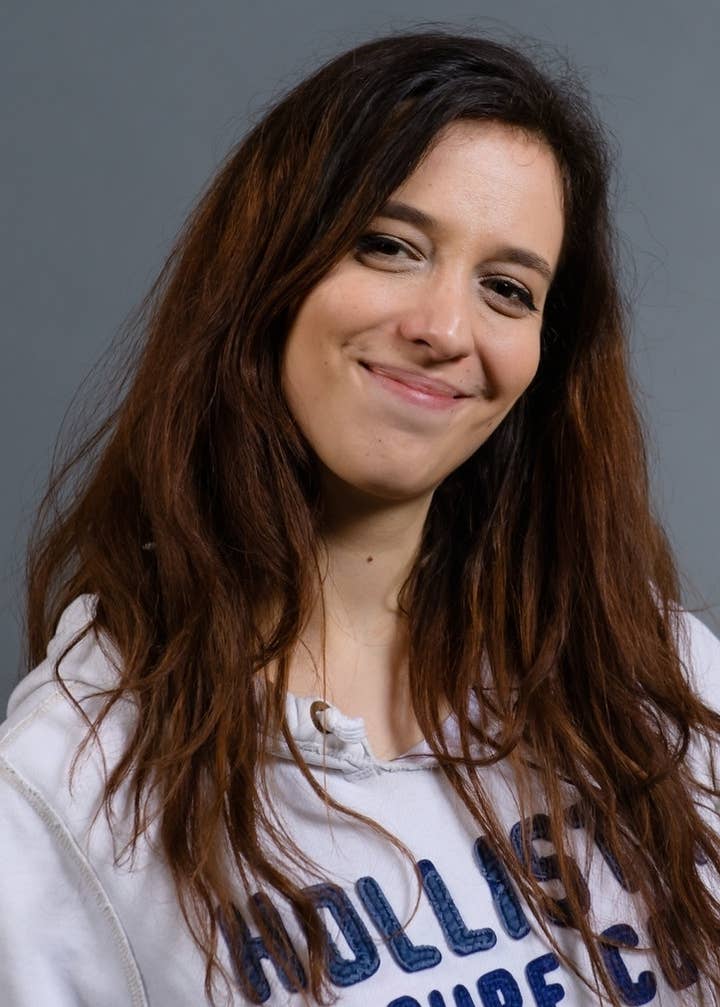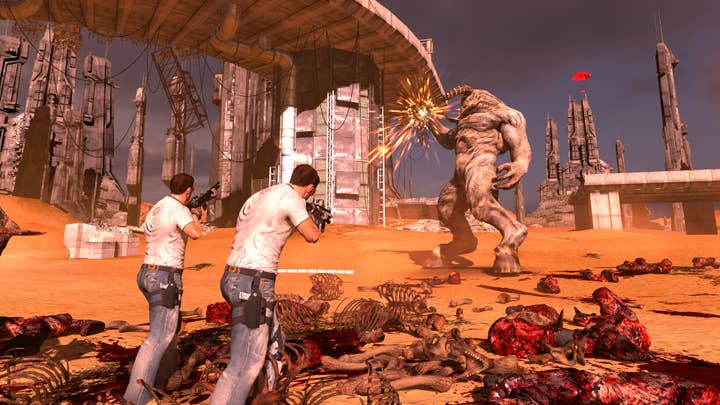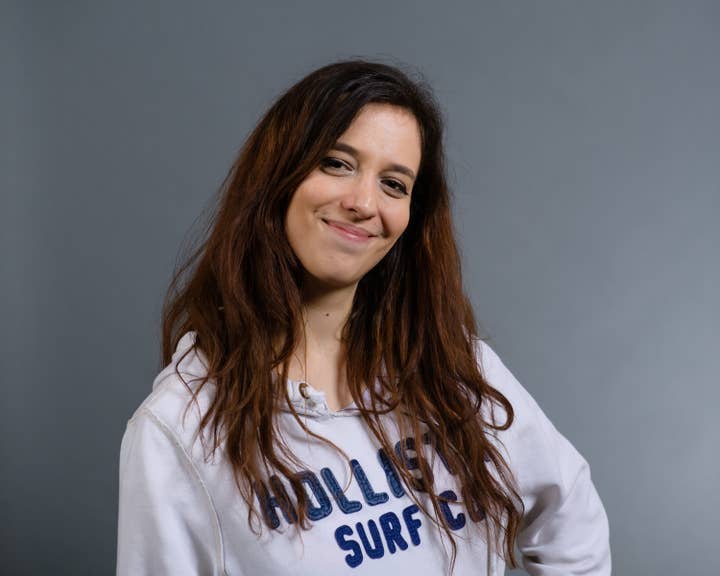The balance between fact and fantasy when building game worlds
Croteam's Nika Dvoravic shares how studying architecture has -- and hasn't -- helped her work on Serious Sam
When Nika Dvoravic was studying architecture, she didn't expect to establish a career designing buildings and worlds that don't actually exist.
But as an environment artist and level designer at developer Croteam, that's exactly what she does. Dvoravic is currently working on Serious Sam 4, drawing on both her academic experience and the latest technology to help build the biggest worlds the series has ever seen.
So how does an aspiring architect find her way into the games industry? When we met with Dvoravic at Reboot Develop earlier this year, she attributed it to her enjoyment of 3D modelling. Having already developed an interest in art and photography -- with a particular focus on buildings for the latter -- she soon learned where her true passions lay.

"I really realised what my thing is when I was in school, and that was 3D," she said. "It was a golden age of 3D modelling -- like 2008, 2009 -- but it was kind of new in my circles, so I was one of the rare people in my uni who started doing 3D from the beginning. A lot of people were drawing by hand [for their portfolio], or photographing, but I was doing computer stuff.
"I'm a gamer first, then I'm an architect. So I started using these skills for mods, but I didn't really think about applying for a job in the games industry. I just didn't think that was a career."
Landing the job at Croteam "kind of happened by accident", according to Dvoravic. Attending Reboot back in 2015, she ended up meeting members of the team, including her current boss, and was soon hired.
"I was looking [at Reboot] thinking, 'Maybe I can do some 3D for some indie studio', no big deal, sort of test the waters," she said. "I was preparing a portfolio for almost a year -- not full time or anything, but I made something that looked good. The guys liked me and my approach, they thought it was interesting, they had time back then to teach me stuff and I've been there ever since."
"I was like, 'Okay, I'm just going to make it how it is in the world, how it makes sense. But unfortunately that makes for really boring gameplay"
Her knowledge of architecture was a great fit with Croteam, which -- despite the over-the-top nature of Serious Sam's action -- has geared towards photorealistic environments in recent years. A prime example is the team's sci-fi puzzle adventure The Talos Principle, which features vistas of crumbling viaducts and other ruins as its scenery.
Dvoravic helped design imagined buildings that would fit alongside realistic ones, but soon found that many of the rules for architecture actually need to be broken when it comes to games development.
"That's something I needed to learn, because I was like, 'Okay, I'm just going to make it naturally, how it is in the world, how it makes sense'," she said. "But unfortunately that makes for really boring gameplay. I needed to learn what makes a good FPS."
As the graphical and computational power of PCs and consoles have improved over previous generations, many developers have focused on creating the most realistic experience possible, even setting their titles in authentic recreations of real-world cities. But while this appeals to her inner architect, Dvoravic now knows that it's the fantasy that makes for enjoyable gameplay.
"Things like where you lead your player, what the obstacles are going to be -- if we replicate that from the real world, it's not going to be interesting," she said.
She continued: "For every artist that's interested in architecture, it sounds like a dream job to invent something that's based on real stuff. It's the kind of freedom I don't have on my projects. The most freedom I can get is designing weird, sci-fi sort of buildings, which is fine, but I don't really get to take real architecture and merge it into fantasy architecture or make fake history."

But surely, that's more enjoyable? Had Dvoravic become a professional architect, she would be restricted to making things that are realistic and must be structurally sound. Developing sci-fi and fantasy games at Croteam means she can build things that are technically impossible.
"Yeah, that's fun," she admitted, adding the Serious Sam VR episodes as a prime example of the type of freedoms she does have in her job.
"Our leads gave us almost complete free rein when it comes to level design and gameplay. They said, 'We have four levels per planet so each designer can just go and make one. You can design [what you want], and if it doesn't work, we'll tell you.' I really enjoyed that sort of responsibility -- that's how it works at Croteam. I can have an idea and they'll be like, 'Go ahead'."
Virtual reality, of course, puts players closer to the action than screen-based gameplay, so presumably this ramps up the pressure for level and environment designers. A small mistake or inconsistency on even the crispest of monitors is going to be less noticeable than when you are surrounded by the virtual world via a headset.
"That's what I thought, but you're so heavily under attack you don't have any time to look for that sort of stuff," Dvoravic said. "Our levels are polished. If there are mistakes, we'll notice them sooner or later. But when we make models, most of us are really neat, we cover all the bases and don't make that many mistakes.
"That project was cool because each designer was testing and playtesting their own level, tweaking things. The perspective between VR and normal games is different so sometimes it might make sense when you look at it on the screen, but when you put on the headset it looks completely crappy. It was an interesting learning experience."
As work ramps up on Serious Sam 4, there are new technologies that have been helping Dvoravic and her team find the right blend of realistic and fantastic architecture. For example, photogrammetry -- the process of generating measurements from photographs -- has "changed the way we do things." The team used this when they visited a small town in Croatia and scanned some of the old stone houses there.
"I think we photoscanned about ten houses, and from those we made 20 houses and rearranged them [to make different villages]," said Dvoravic. "They were actually in the tech demo we showed at E3, and they look really good. We wouldn't be able to do that by just painting and combining textures -- they just look real.
"Also, the new technology we have, the terrain engine, means we have realistic scenery. Hills like this" -- she waves at the mountainous Croatian coastline where Reboot is held -- "no problem. We have designers and artists, we can just take a brush and say, 'Right, I want the hill to be this big, I want some trees here.' There's procedurally generated trees and grass, I don't have to put models of trees where I want them, it can just be 'I want a forest here.' It makes design processes so much easier."

